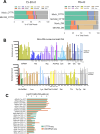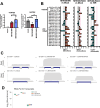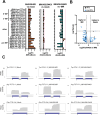This is a preprint.
Gammaherpesvirus infection triggers the formation of tRNA fragments from premature tRNAs
- PMID: 38746336
- PMCID: PMC11092647
- DOI: 10.1101/2024.05.01.592122
Gammaherpesvirus infection triggers the formation of tRNA fragments from premature tRNAs
Update in
-
Gammaherpesvirus infection triggers the formation of tRNA fragments from premature tRNAs.mBio. 2025 Jul 9;16(7):e0087525. doi: 10.1128/mbio.00875-25. Epub 2025 May 30. mBio. 2025. PMID: 40444975 Free PMC article.
Abstract
Transfer RNAs (tRNAs) are fundamental for both cellular and viral gene expression during viral infection. In addition, mounting evidence supports biological function for tRNA cleavage products, including in the control of gene expression during conditions of stress and infection. We previously reported that infection with the model murine gammaherpesvirus, MHV68, leads to enhanced tRNA transcription. However, whether this has any influence on tRNA transcript processing, viral replication, or the host response is not known. Here, we combined two new approaches, sequencing library preparation by Ordered Two Template Relay (OTTR) and tRNA bioinformatic analysis by tRAX, to quantitatively profile full-length tRNAs and tRNA fragment (tRF) identities during MHV68 infection. We find that MHV68 infection triggers both pre-tRNA and mature tRNA cleavage, resulting in the accumulation of specific tRFs. OTTR-tRAX revealed not only host tRNAome changes, but also the expression patterns of virally-encoded tRNAs (virtRNAs) and virtRFs made from the MHV68 genome, including their base modification signatures. Because the transcript ends of several host tRFs matched tRNA splice junctions, we tested and confirmed the role of tRNA splicing factors TSEN2 and CLP1 in MHV68-induced tRF biogenesis. Further, we show that CLP1 kinase, and by extension tRNA splicing, is required for productive MHV68 infection. Our findings provide new insight into how gammaherpesvirus infection both impacts and relies on tRNA transcription and processing.
Figures







References
-
- Sun C, Fu Z, Wang S, Li J, Li Y, Zhang Y, et al. Roles of tRNA-derived fragments in human cancers. Cancer Lett. 2018;414:16–25. - PubMed
Publication types
Grants and funding
LinkOut - more resources
Full Text Sources
